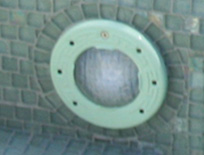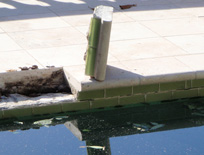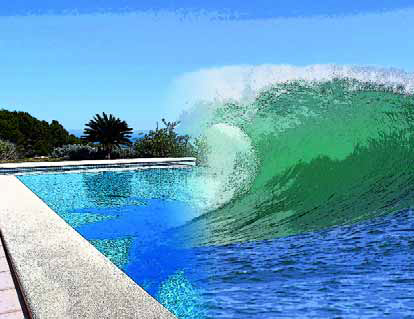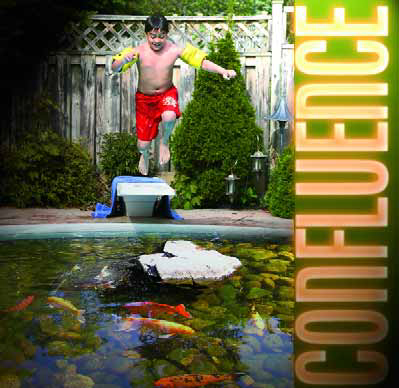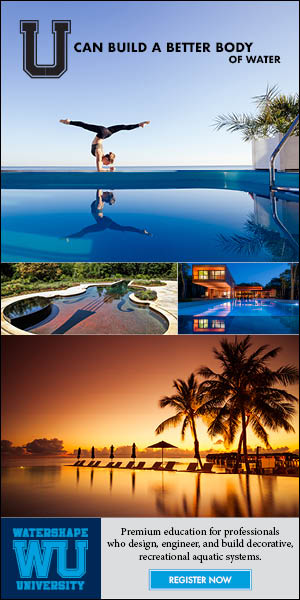pools
It’s unlikely that anyone back in 1992 would have imagined that the daughter of fashion designer Calvin Klein would change the way we think of swimming pools. That might be a slight exaggeration, but to me there’s no question that Pools by Kelly Klein, first published by Rizzoli 15 years ago and rereleased late in 2007, was unique at that time in treating pool design as
Some people say there are unattractive things we just can't avoid in installing our watershapes, including the visual intrusions provided by junction boxes, drain covers, skimmer lids, deck drains, pool cover key switches, spa-side remotes and all sorts of other things I refer to as "architectural uglies." Personally (and I know I'm not alone), I've never been satisfied
In pool-remodeling work, it's very common to raise a bond beam to meet the needs of a new deck or edge detail — or simply to make the pool level again. As ordinary a step as this may seem, it can be trickier than you might think because, in applying
It’s unlikely that anyone back in 1992 would have imagined that the daughter of fashion designer Calvin Klein would change the way we think of swimming pools. That might be a slight exaggeration, but to me there’s no question that Pools by Kelly Klein, first published by Rizzoli 15 years ago and re-released late in 2007, was unique at that time in treating pool design as a legitimate art form. In many ways, in fact, I think her book may well have ignited the design revolution that has unfolded in the years since it was first published. I didn’t run across this oversized volume until 1999, when I attended
For centuries, human beings have turned to immersion and exercise in water as a means of healing injuries and illnesses and of promoting both physical and mental health. Researchers have investigated the hows and whys of these phenomena for years, and the benefits seem to be even more remarkable than originally thought. There's still much to learn, but there's already more than enough good news for watershapers to share with motivated clients. (Photos © Dreamstime)
If you've been paying any attention to the media lately, you may have noticed that watershaping is "in" as a big-time topic for television, books, magazines, newspapers and other forms of mass communication. Never in all my years as part of this industry can I recall a time during which the subject of beautiful custom pools, spas, fountains, ponds, streams and interactive bodies of water has won so much attention. It seems as if our society has finally caught on to the power, beauty and excitement of the art form many of us
I've been using the word "confluence" a lot lately - so often, in fact, that I decided to look it up to be sure that I wasn't misusing it in some way. According to Webster, the first definition of confluence is "a flowing together of two or more streams," with a second meaning of "a gathering, flowing, or meeting together at one juncture or point." To me, it's a perfect word to describe a trend that's redefining the watershaping industries - that is, a growing confluence between the pool/spa and pond/stream industries. Coming from the pool/spa side of the discussion, I can recall a time not very long ago when ponds and streams were only rarely if ever considered by anyone in my business. What could pools and spas possibly have in common with
Swimming pools and other watershapes make great subjects for photographers, which makes it logical that every year or two I've be able to amass a new collection of these books to review. In general, publications such as these are all about pretty projects and are aimed mainly at consumers, but I've always found them useful as sources for design ideas and, in general, as a means of seeing what other people are doing. For the most part, however, these publications are not particularly "informative": Once you get past the pictures, there's really not much else there to build knowledge or advance the craft. Such is the case with all four of the publications I'll cover here in quick, round-up fashion. All are beautifully illustrated, and some display an interesting range when it comes to
As watershape designs become increasingly creative and complex, the demand for more precise methods of engineering their structures has grown as well. To meet that need, observe Ron Lacher and Aaron Cowen of Pool Engineering, experts like them are turning to advanced three-dimensional modeling technology - systems so sophisticated that they make it possible to develop plans for daring projects such as they one they describe here. It's easily the most sophisticated watershape structure we've ever engineered. The pool/spa combination, not yet built, will rise some 50 feet above grade on a cliff behind a home in the densely populated Hollywood Hills near downtown Los Angeles. As conceived, the vanishing-edge pool will sit a full ten feet below the spa in a complex monolithic structure. Supporting the entire affair will be











